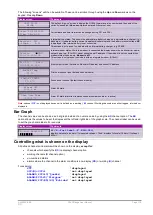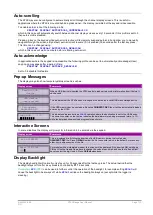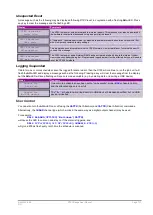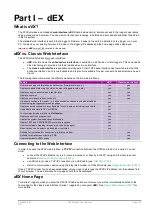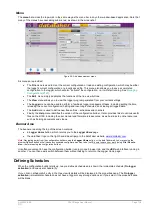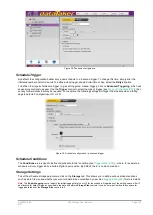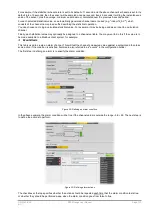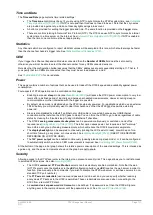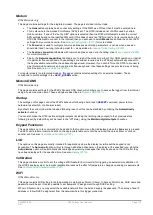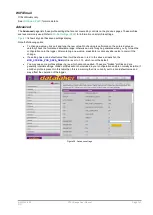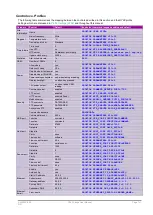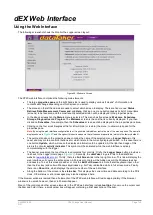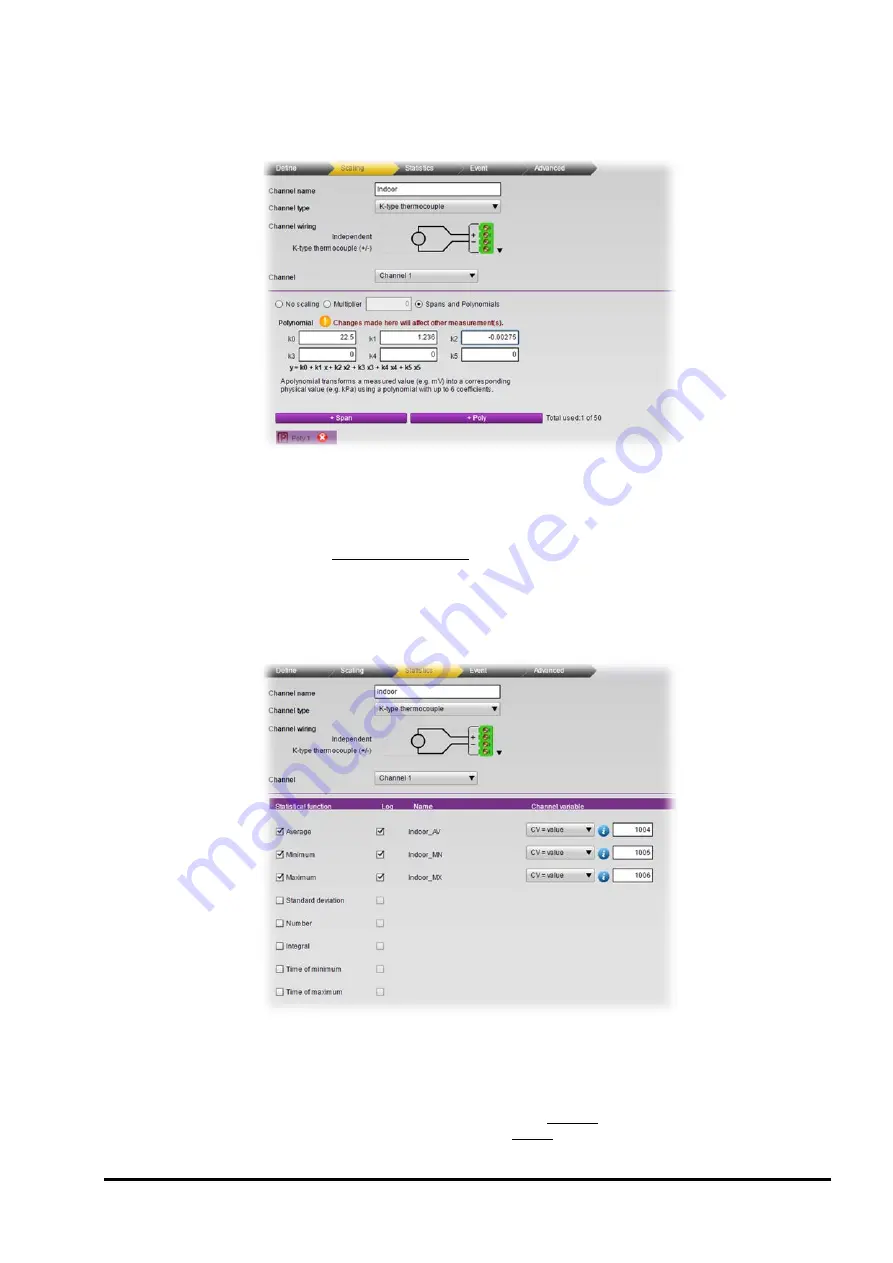
UM-0085-B09
DT80 Range User Manual
Page 131
RG
Scaling
The
Scaling
tab is where you define either a simple scaling factor (channel factor), or a span or polynomial. Selecting
"Spans and Polynomials" will bring up a list of defined spans and polynomials on the left hand side. Clicking on an entry
will show its details in the area on the right.
Figure 27: Defining a polynomial
Initially, no spans or polynomials will be defined. To add one, click the
Add
button, select
Span
or
Polynomial
, then
enter the required coefficients. In the above screen shot, the following polynomial has been defined:
22.5 + 1.236x – 0.000275x2
Note:
span and polynomial definitions are shared between channels. If you now define a new channel, all previously entered spans and
polynomials will be available for selection. This means that if you select an already defined polynomial and then edit it (change the
coefficient values) then you may be affecting other channels. A warning is displayed when an existing span/polynomial is selected to
remind you of this.
Statistics
The
Statistics
tab is used to define additional statistical report values for the selected channel.
Figure 28: Defining additional statistical report values
For each row that is ticked, an additional measurement value will be calculated and reported. So in the above example a
total of four values will be logged: the original measurement, plus the average, minimum and maximum values calculated
over the period since the time the enclosing schedule was executed.
If any statistical values are defined for a channel, the channel will then be sampled at the statistical schedule rate, rather
than the rate of the channel's own schedule. It will, however, still be logged at its own schedule's rate.The statistical
schedule rate is a global setting, which is set by clicking on the top level "logger" entry in the tree view.



